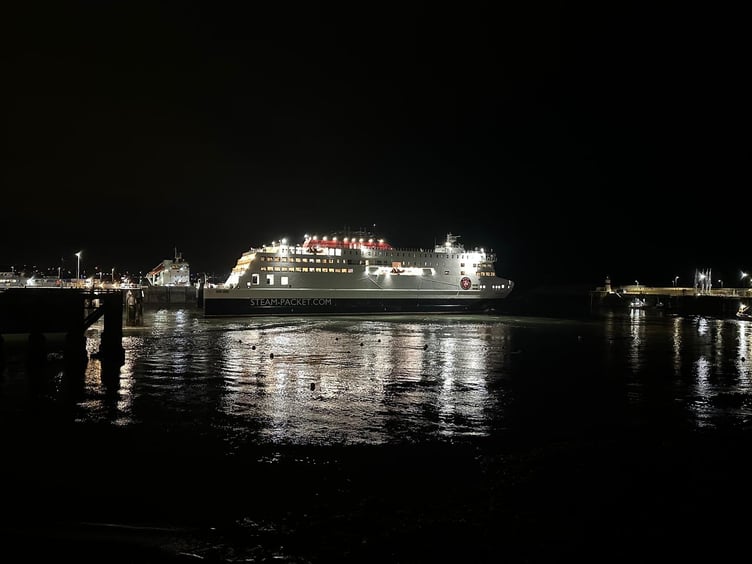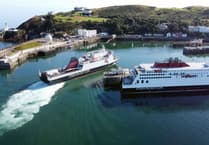An independent report into the grounding of the Manxman has highlighted a raft of concerns including the use of out-of-date charts, lack of harbour maintenance and safety concerns not being prioritised.
The Department of Infrastructure’s (DoI) harbours division requested that the Health and Safety Advisory Service conduct an internal investigation into the root cause of the incident and recommend measures to prevent it happening again.
It was around 5.55pm on Saturday March 1 this year when the Steam Packet’s flagship the Manxman ran aground while navigating towards the King Edward VIII Pier in Douglas.
At the time the tide was ebbing, with low water due at 6.40pm. The vessel was aground for around 90 minutes waiting to be refloated by the rising tide. No damage was reported.
A full survey of the harbour had last been commissioned in June 2024 which showed a depth of between 5 and 5.5m in the area where the Manxman ran aground. But the Steam Packet used outdated charts from July 2023.
And the report says that a section of the harbour was resurveyed in August last year following reports from the Steam Packet that its vessels were ‘scraping’ - and this showed a depth of just 4.6m at the grounding site.
But there is no evidence to show that this chart had been communicated to the Steam Packet, the report reveals. If it had, it would have shown an under keel clearance of -0.13m.
‘This was not picked up, nor was anyone alerted to the low depth,’ the report notes.
Under the Sea Services Agreement between the DoI and the Steam Packet, the department is required to maintain the navigational approach channel to both linkspans, including a 6.5m depth in front of the berth 5 linkspan which the Manxman uses.
Dredging typically falls into two categories. Capital dredging is dredging to a depth not carried out within the last 10 years while maintenance dredging is undertaken to keep channels, berths and other areas at their designed depths.
The last dredge of Douglas harbour was conducted in December 2024 by the harbour’s workboat, Tarroo Ushtey, while there had been no capital dredge for more than 20 years.
Engine issues on the boat had caused problems and prevented tasks being conducted, including dredging, the report states.
The port’s marine safety code includes a requirement to ensure that regular surveys are carried out to check depths in all relevant areas of the harbours, including approaches, channels and at berths.
But the report found that there was no evidence to show the harbours division was compliant with this - and there was also no risk assessment conducted or reviewed on the sediment movement and management.
It also highlights a lack of communication between the division and senior managers, a poor culture and reported safety concerns not treated as a high priority.
The report also found tidal gauges on the pier wall were ere unreadable as they were covered in algae.
In a statement, the DoI said it welcomed the ‘lessons identified’ and is ‘committed to acting on the recommendations’.



.jpeg?width=209&height=140&crop=209:145,smart&quality=75)
